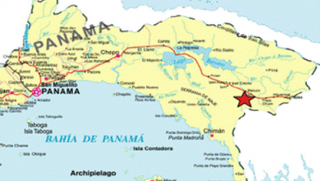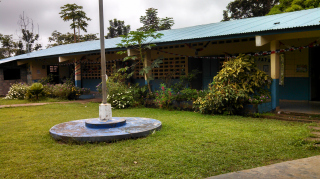Playa Chuzo, Panama
![]()
![]()
![]()
![]()
![]()
![]()
![]() Click on Programs to learn more about their work in this community
Click on Programs to learn more about their work in this community
General Information

| Population* | 329 |
| Number of homes | 85 |
| Number and % of children | 74 |
| Electricity | Yes |
| Corregimiento | Torti |
| District | Chepo |
| Corresponding Health Center | Centro de Salud in Torti |
| Distance from compounds | 15 minutes |
* Population does not reflect how many patients will be seen on medical
brigades as many people from surrounding communities come seeking
Medical Brigades medical attention.
Top Needs Expressed
The top needs expressed by the key community members are improvements to the aqueduct, the road, and sanitation facilities in the home.
| Playa Chuzo has a primary school in the community that goes from kindergarten to 6th grade. It is located in the center of the community along the main highway. The school has a total of 74 students, 5 classrooms, and 5 teachers. Morning snacks and lunch are provided by the school. Currently the school director is looking to improve the recreation area and petition for a computer lab for the students. To contnue their education, students must travel by bus to Torti for middle and high school. |  |
Playa Chuzo shares a gravity based aqueduct system with Torti. The water board in Torti is responsible for chlorinating and maintaining the system. Community members describe the water pressure as sufficient and most of the time there is running water 24 hours a day. 100% of the community is connected to the water system and pay a monthly fee of $0.40 per meter cubed. The community's main issue with the water is the system's capacity compared to the population it serves. The system's infrastructure has not grown alongside the growth in population, causing shortages in supply and maintenance issues.
Playa Chuzo does not have a health center in the community. Community members usually travel to Torti for medical care. It is about a 15 minute drive east and there are only 3 days of clinic available per week. The most common illnesses in the community include colds, skin infections, and gastro intestinal issues. Amongst children, colds and skin infections are especially common. About 12% of the community has flush toilets, 100% have gas stoves, and about 96% have cement floors. Water filters are not very common, with about 18% of the community using this treatment method.
The houses in Playa Chuzo are mostly made of cement blocks, wood, and zinc plate roofing. It is mostly a farming community with 60% of community members employed in agriculture. Other types of work include construction and catte raising. Farmers generally grow corn, rice, and raise cattle. Small businesses in the community include a small store, a butcher's shop, and cantinas. Community members go the bank in Torti or the smaller cooperative for their financial needs.
The first lady of Panama's foundation currently has a garden and chicken coop project with the school in Playa Chuzo. Other than this, no other environmental education initiatives have been carried out in the community. A rudimentary waste management system exists in the community where a truck comes to collect waste from homes and takes it to a small dump nearby. Families also discard of waste by burning it.
For all legal issues, community members go to the corregiduria or City Hall in Torti or all the way to Panama City. Currently, there are no lawyers or legal assistance within the community. The most common issues include child support, and family law issues. The majority of the community have property rights for their land and homes.
The primary school has a garden project with the First Lady of Panama's foundation, but there are no other non-governmental organizations currently working in the community.
Medical and Dental brigades work in the community of Playa Chuzo.
Source of Information: Key Informants Interview
Date of Interview: October 10, 2013
Last Updated: December 10, 2013